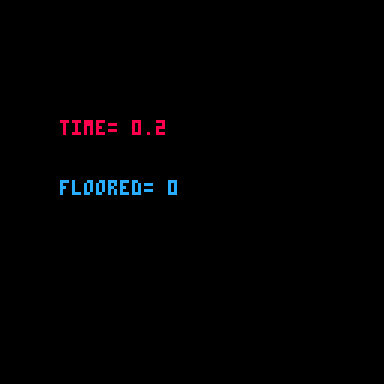FLR
flr( a )| flr | "floor" |
| a | a number |
The flr( a ) function is used to round down the given number, a, and return an integer (whole number).
![]()
For example, if we call flr(1.99), the function will round down to the nearest whole number and return that value. Therefore, it will return 1.
value = flr(1.99)
print(value) --prints 1If we pass a negative number, for example flr(-5.3), the function will return -6 since it is the nearest whole number down.
value = flr(-5.3)
print(value) --prints -6There are many reasons you will want to "floor" a number. One common use is with the time() function, which almost always returns a decimal value, but you may want to simply know the number of seconds passed without any decimal places.
function _draw()
cls()
millisec = time()
sec = flr( millisec )
print("time="..millisec,20,40,8)
print("floored="..sec,20,60,12)
end
![]()
Shorthand
It is common to want to floor a number after dividing, and there is a shorthand for that, the backslash ( \ ).
--longform
a = flr(10/3)
--shorthand
b = 10\3It is also common to want to floor a random number.
--longform
a = flr( rnd(10) ) --integer range 0-9
--shorthand
b = rnd(10)\1 --integer range 0-9![]()
2768
12 May 2023



